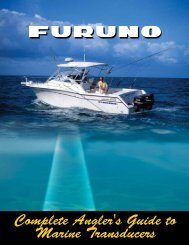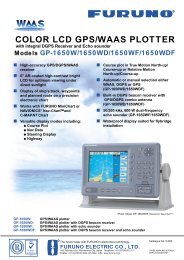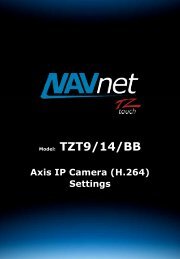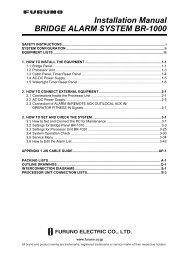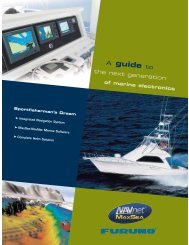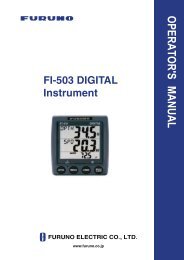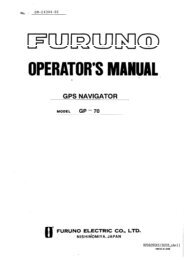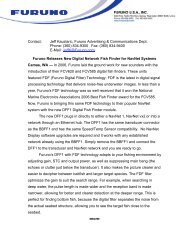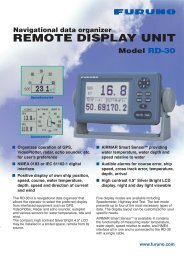FS1503 Installation Manual E (1855 KB) - Furuno USA
FS1503 Installation Manual E (1855 KB) - Furuno USA
FS1503 Installation Manual E (1855 KB) - Furuno USA
You also want an ePaper? Increase the reach of your titles
YUMPU automatically turns print PDFs into web optimized ePapers that Google loves.
1.4 Mounting of Antenna<br />
About antennas<br />
The antenna plays the most important role in radio communication. If it cannot receive or<br />
transmit effectively because of improper installation, even the most sophisticated transceiver<br />
will be rendered useless.<br />
There are various types of SSB antennas. The most commonly used are a long wire and a whip.<br />
Whatever antenna is to be used, the antenna coupler can tune a long wire or whip whose total<br />
length is 6 to 15 meters. Although a longer antenna is preferable when the radio is operated only<br />
on low frequencies, use this size of antenna to ensure stable automatic tuning on all bands.<br />
A long wire antenna is inexpensive and in general provides better performance than a whip<br />
antenna, provided the vertical part is long enough.<br />
A whip antenna is easier than a long wire antenna to install and provides good overall coverage<br />
of most SSB frequencies. In fact, if you don’t plan to venture more than 500 miles from shore<br />
and the ground system is excellent, a simple 7 m (23 feet) whip antenna will probably suffice.<br />
A whip is installed as high as possible (though height is not so critical as with VHF since SSB<br />
is frequency dependent, not range dependent), away from any nearby objects.<br />
Mounting considerations<br />
When selecting a mounting location, keep the following points in mind:<br />
• The length of the vertical portion should be longer than 4 meters, and the slant angle of that<br />
part should be within 10 degrees of vertical.<br />
• Separate the antenna as far away as possible from stays, metallic objects, direction finder<br />
antenna, Inmarsat antenna.<br />
• Locate the insulator away from funnels and masts.<br />
• If the antenna coupler is installed outdoors, use a lead-in insulator to make the connection. If<br />
necessary, use a high quality antenna switch and stand-off insulator.<br />
• If the antenna is connected directly to the coupler, use a strain insulator to prevent insulator<br />
fatigue.<br />
1-7



